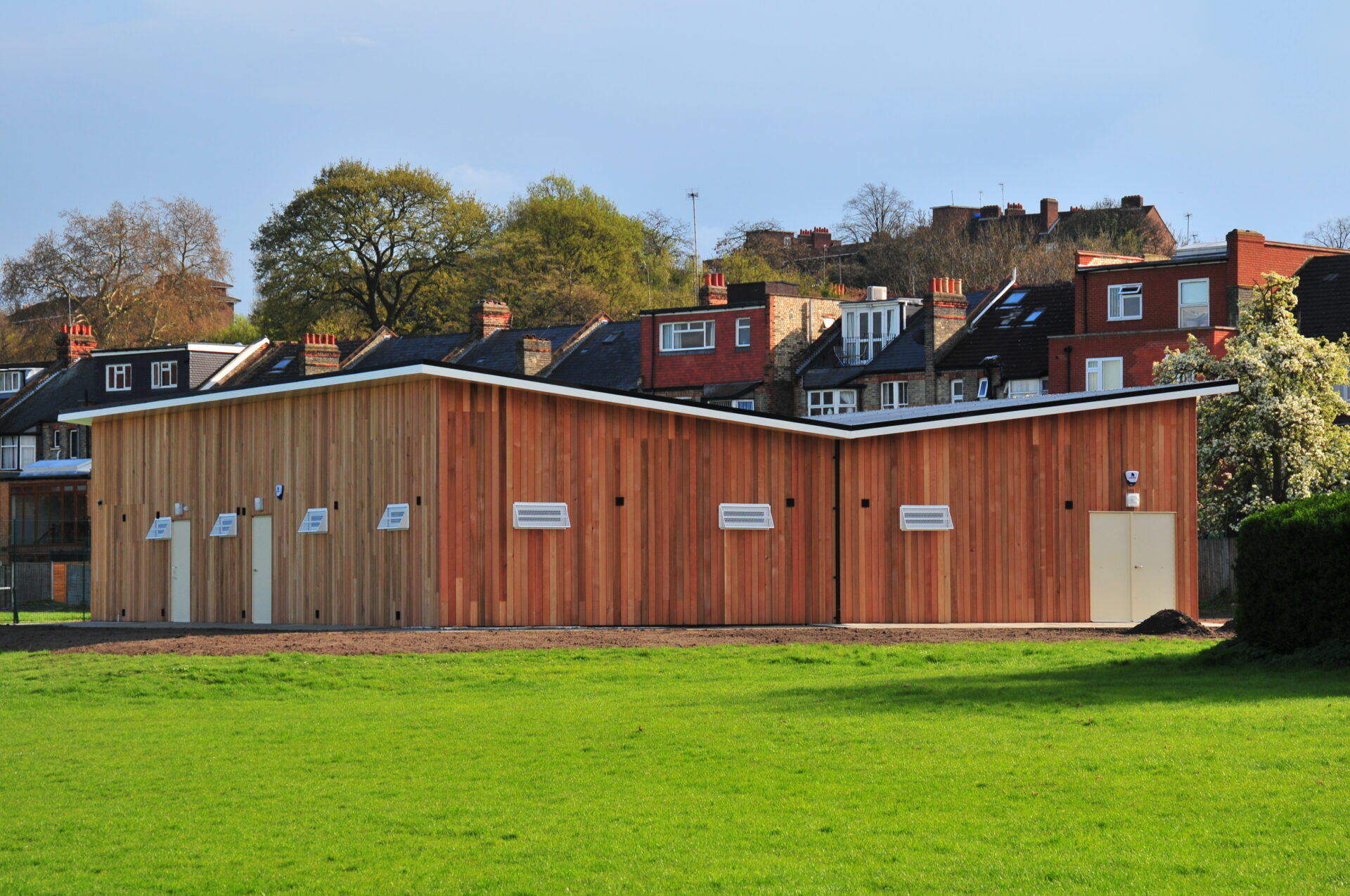Advantages of modular construction for sports and leisure projects
5 min read | Published November 10th 2025 | Updated November 11th 2025 | James Osborne
A growing demand for modern, high-quality infrastructure that can be delivered faster and more efficiently is leading contractors and local authorities to choose offsite manufacturing for new sports and leisure developments. In this blog, we’re breaking down the advantages of modular construction in the design, build, and install of new facilities, looking at why councils are turning away from traditional build methods.

Why are people using modular construction for sports and leisure projects?
The UK Government recently announced a huge £400m investment into the sports and leisure sector, directed toward improving grassroots sports facilities across the country. This funding is set to upgrade existing infrastructure, as well as build new facilities, in order to promote health and wellbeing.
To ensure this infrastructure is delivered quickly and effectively, there is a growing trend to turn to innovative building methods to help serve communities with the high-quality facilities they need.
Offsite construction has been championed for years by organisations such as Sport England, with a focus on building low maintenance, Accessibility Act compliant, facilities which can be scaled as clubs grow. It’s something the UK Government has been promoting too, with a £10 billion framework for the public sector to access design, fabrication and installation solutions set to run until at least 2027.
With traditional construction often leading to slower project completion times, local authorities and contractors alike are now seeing the advantages of modular construction in increasing efficiencies and accommodating increasing demand.
What are the advantages of modular construction, compared to traditional construction for sports and leisure facilities?
There are many advantages of modular construction for building sports and leisure facilities.
Modular buildings can be constructed more quickly than their traditional counterparts, thanks to groundwork and factory production taking place at the same time. This controlled method of manufacture means that outside factors, such as the weather, are less likely to impact project timelines, whilst install is also quick once the modules (parts of the final building) arrive on site.
Short install times also mean minimal site disruption, allowing for day-to-day activities to continue whilst construction takes place. At least 80% of the build takes place offsite, reducing disturbances to your local community.
Once installed, modular buildings can be fitted out completely, ensuring they’re fully functional at the point of handover. Whether you need changing rooms with showers, or office rooms with canteen facilities, modular constructed facilities offer you flexibility for future expansion too if needed.
In an age where the push for greener practices is changing every industry, one of the biggest benefits of offsite construction is sustainability. Modular manufacturing reduces waste, emissions and energy usage, supporting local authorities to reduce the carbon footprint of construction projects.
Beyond sustainability, the processes and materials used in modular construction offer another benefit – durability. If properly manufactured, installed, and maintained, you’ll find that your modular building will last for at least 50 years – with high quality materials such as timber and steel utilised during the production of the modules.
What types of modular buildings are available for the sports and leisure sectors?
If you’re planning a construction project in the sports or leisure sector, you can utilise modular construction for projects including:
Whether you’re in need of upgraded changing rooms at your local football club for the winter months, or your cricket club needs a new clubhouse before the new season starts, modular construction can offer you the space you need, fast.
The Government funding as part of the £400m pledged for grassroots sport has already helped clubs across the UK to build new facilties like changing rooms, alongside lay new pitches, and install floodlights and solar panels.
This investment has so far supported a range of sports including football and rugby, with around 15.7 million children and adults regularly playing football in the UK, and a further 880,000 people playing rugby in England.
Why should I choose Thurston Group for upgrading my sports or leisure facility?
At Thurston, we’ve proven time and time again we can deliver where it matters. We’ve built high-quality facilities across the country, including at Spring Hill, where we upgraded an outdated, uninspiring structure with a new modern building, complete with a fully furnished dressing room.
We’ve got a stringent quality control process in place, aided by our recent digital transformation with WrxFlo, where we’ve implemented screens across our sites to monitor our production in real time. This has reduced our defect rates by 22%, standardised our processes, and increased our operational efficiency – benefits that we’re passing on to our customers.
Whether you need a simple, secure storage cabin for your equipment, or a bespoke modular building complete with changing rooms, offices, and catering facilities, you can be confident that each Thurston structure is manufactured with longevity and high performance in mind.
We’ll tailor an offsite solution to your needs, meeting accessibility requirements, as well as helping you stay as energy efficient as possible, so you can spend your funds where they matter.
Ready to upgrade your sports facility? Get in touch with our expert team today, and find out about the bespoke modular construction solutions we offer.
Read our Other Recent News
FAQs – Cabins
Covering the most frequently asked questions about the cabins and relocatable building products offered at Thurston Group.
3 min read | Matt Goff
The key building and fire safety regulations we’re meeting and exceeding in 2025
To help you stay in the know of the current requirements for builders and offsite manufacturers, we’ve prepared a handy guide covering what the key UK building and fire safety regulations are heading into 2025.
3 min read | Marc Johnson